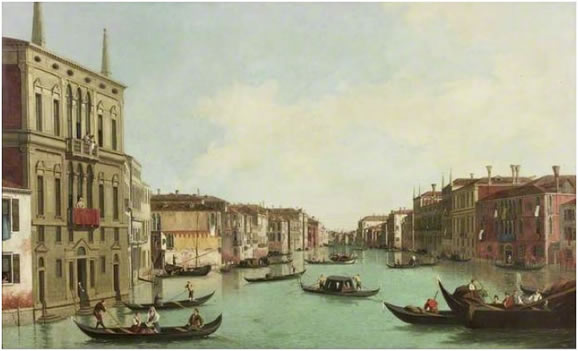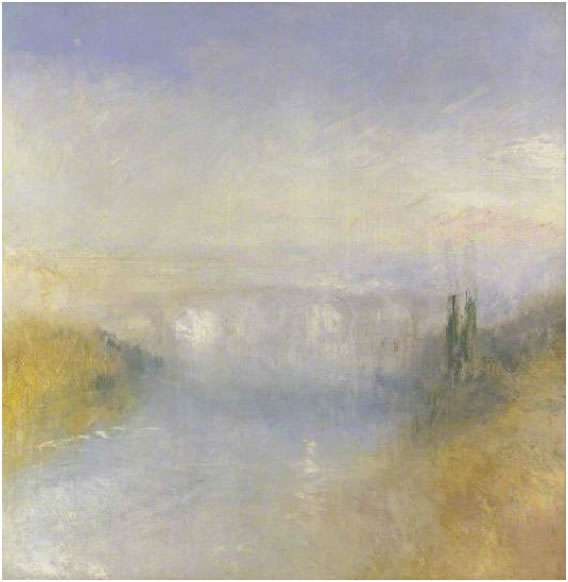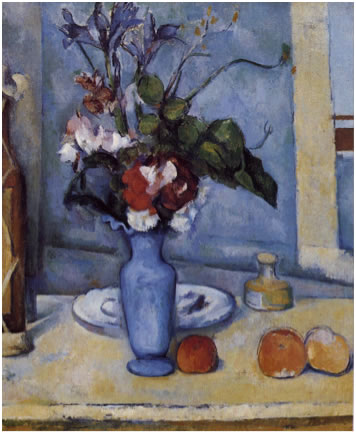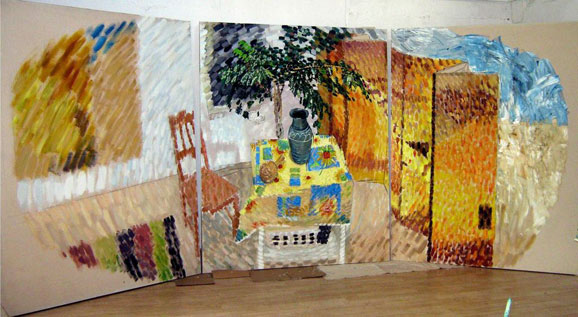Raison d'etre
Our current forms of information display are essentially based around a form of illusionary space commissioned if not entirely fully formed in the period known as the Renaissance (13-15C). Central perspective developed up-to and beyond Canaletto’s famous paintings of Venice on the 17-18th C where the underlying geometry is loaded with surface detail.

Canelleto: Grand Canal Venice
This painterly approach matures into modern day Realism. There is very considerable ‘craft’ and ‘application’ involved in this pursuit and it is directly analogous to the dedicated early attempts to model and render computer graphics. However, it was clear to many visual artists and now equally to the computer graphics artists that this approach does not lead to the production of media that’s commensurate with experiential reality.
“There is nothing less real that realism”. Georgia O’Keeffe
Optical projection has dominated 20th C visual media production and display systems it has also dominated and lead and our approach to visual perception via the notional retinal image being transferred to the brain and hence to perception, yet it is equally clear that the phenomenon of vision is non-photographically rendered. There is no information structure blur in vision, no motion blur, no depth-of-field, no pictures, exposure times, picture frames or frames-per-second involved. There is not even temporal alignment between the visual pathways. There can’t be any binocular fusion going on within the phenomenon of vision, as there aren’t any ‘pictures’ available to us to fuse.
Pictures and images: Abridged quote Prof Jan Koenderink
Picture being: “a real representation, an ordered record, such as a video-signal, a photograph, an activity pattern in a neural structure. The order of the picture is purely conventional and exists only with respect to an external agent.
Images: “always contain more than pictures because the whole structure of the receiver (a lifetime’s experience) is summed up in them.”
Vision is closer to a controlled hallucination that it is to the projection of optics. It’s clear that we require a new form of illusionary space that’s not based on either the geometry of perspective or the fundamentals of optics but on the actual data-structures and processes of information exchange that take place within the phenomenon of vision from which we all develop and present experiential reality. Collectively we consider these factors to define the basis of perceptual structure. We term this new form of illusionary space Vision-Space as opposed to picture space. Given the highly significant role that visual art played in the Renaissance it is entirely appropriate and befitting that Vision-Space has been established by visual artists and its development can be traced back from Chardin (18th C) through Turner (18-19th C) and the impressionists (19-20th C) to the modern day painters.
 JM. William Turner: River seen from a hill
JM. William Turner: River seen from a hill
These painters stopped painting pictures and started to show us images that contain flashes of perceptual structure. In association with the vision and computer sciences it is now possible to model visual awareness and to eventually seed this phenomenological form of illusionary space within our information display technologies for the 21st C.

Cezanne: The blue vase
The task is to develop the basis for an experiential as opposed to a virtual reality. Doing so will improve and enhance:
- The immersive qualities of visual media
- Spatial awareness (implicit vision or peripheral vision)
- The contemplation of objective form (explicit vision or central vision)
- 1st person observer status, the illusive ‘being there’ factor
- Orientation within simulator environments
- Our ability to perform spatial judgements within simulated environments
- The contribution of interface technologies to image generation (eg gaze-tracking and depth-mapping)
- Efficiencies in production, rendering and transmission
- The communication of meaning and speed of comprehension
- Awareness with command and control structures and hence decision making
Experiential reality systems should also inform the debate surrounding the health issues now being associated with our display technologies (2D and 3D). If immersion in virtual reality systems fails to present information in a format commensurate with human perceptual structure, overexposure (prolonged immersion) in the artifice could well permanently inhibit neuronal firing and pathways development. We would expect increased susceptibility during the formative period of a child’s development and also in old age when systems are struggling to remain active. Specifically, the concern is that our information display systems are failing to acknowledge the data processing that takes place in the dorsal stream.
Finally, if in experimentation we are using deficient media based around an incomplete understanding of the data processing taking place within the brain as the basis of our stimuli, then the results we obtain from such experimentation will only be pertinent to our response to virtual reality simulation and not experiential reality. A photograph does not stand in for the real setting. The results obtained will confirm the misunderstanding implicit in the experimental set-up creating a hall-of-mirrors scenario as opposed to meaningful insightful into the nature of human perception. The research will hold us back as opposed to take us forwards. It follows that these experiments will tell us little about multi-sense integration but set up a plethora of false headings and misunderstandings that only a change in ontology will render visible.

John Jupe: Still life with screen
John Jupe
© Perceptual Awareness Center 2014
